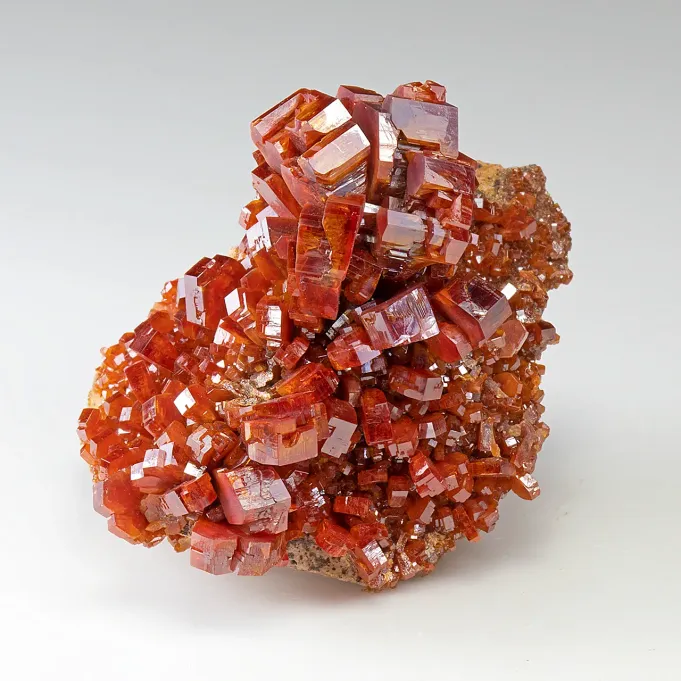
Appearance
Typical colors of vanadinite include bright red, orange-red, and brownish-red. One of its most characteristic colors is its vibrant crimson. It has a bright, occasionally slightly greasy appearance due to its resinous to sub-adamantine luster. Typically transparent to translucent, vanadinite crystals let some light through. Vanadinite forms hexagonal prismatic or barrel-shaped crystals when it crystallizes in the hexagonal crystal system.
Geographical Distribution
Typical colors of vanadinite include bright red, orange-red, and brownish-red. One of its most characteristic colors is its vibrant crimson. It has a bright, occasionally slightly greasy appearance due to its resinous to sub-adamantine luster. Typically transparent to translucent, vanadinite crystals let some light through. Vanadinite forms hexagonal prismatic or barrel-shaped crystals when it crystallizes in the hexagonal crystal system.
History
The Spanish mineralogist Andrés Manuel del Río made the initial discovery of it in Mexico in 1801. The mineral he referred to as “brown lead” was said to include a novel element that he initially dubbed pancuronium and then erythronium. He was eventually persuaded, although, that this was only an impure form of chromium rather than a brand-new element. Nils Gabriel Sefström discovered a new element in 1830 and gave it the name vanadium. This was eventually found to be the same metal that Andrés Manuel del Río had previously discovered. The “brown lead” from Del Río was also found again near Zimapan, Hidalgo, Mexico, in 1838. Due to its high vanadium content, it was termed vanadinite. Since then, vanadinite has also been referred to as lead vanadate and johnsonite.
Metaphysical Properties
Some people think that vanadinite has healing energy and mystical qualities. It is well-liked in crystal healing and meditation techniques because it is said to improve concentration, creativity, and resolve. These assertions, however, are unsupported by science and are under the category of alternative belief systems.

Chemical Composition
Vanadinite’s chemical formula, Pb5(VO4)3Cl, indicates that lead (Pb), vanadium (V), oxygen (O), and chlorine (Cl) atoms make up the majority of its makeup.
Uses
It does, however, have certain specialized uses and applications in a number of fields:
- Mineral Collecting: Because of its striking red to orange-red color, eye-catching crystal forms, and distinctive hexagonal prismatic crystals, vanadinite is highly prized by collectors and aficionados of minerals. It is frequently gathered and shown as a specimen in mineral exhibits, museums, and private collections.
- Research and Education: Vanadinite is a useful research specimen in the fields of geology and mineralogy. It offers understanding of mineral formation, crystallography, and geological processes. Vanadinite can be used as a teaching or reference material by geologists and scholars.
- Art and Jewelry: Vanadinite’s vivid color and distinctive appearance make it a rare find for use in jewelry and lapidary art, despite its rarity compared to other gemstones and minerals. But because of its lead content and comparatively poor hardness, it is less appropriate for regular jewelry.
- Scientific Investigations: Vanadinite has been utilized as a source of vanadium in scientific investigations pertaining to the characteristics of vanadium compounds or laboratory tests.
Table





